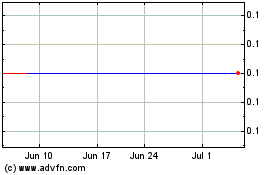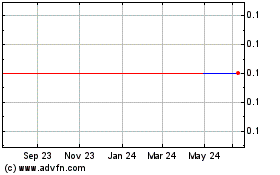Kohl's Shows Effects of Retail Slump
May 12 2016 - 4:50PM
Dow Jones News
Department stores are in a funk and executives at some of the
country's biggest chains are struggling to explain why consumers
aren't spending more time and money in their stores.
But analysts have a familiar culprit: Amazon.com Inc.
A day after Macy's Inc. reported its worst quarterly sales since
the recession, rival Kohl's Corp. posted an 87% drop in profit and
an unexpected decline in sales. Both companies relied on big
markdowns to clear out unsold inventory in the quarter.
Kevin Mansell, chief executive of Kohl's, said Thursday the
1,100-store chain is still figuring out how much a recent drop in
foot traffic was related to issues he can address with changes in
inventory and marketing, and how much was related to the economy or
broader changes in consumer habits.
"I think we're still grappling a little bit with that," he said
on a conference call. "We're definitely not in a position that
we're putting a stake in the ground and saying hey, this one is the
big driver."
Analysts, however, argue that Amazon, which has made an
aggressive push into apparel and fashion, is starting to take
significant market share from traditional department stores. In a
research note Thursday, Morgan Stanley analysts estimated that
Amazon already accounts for about 7% of the overall U.S. apparel
market and will reach 19% of the market by 2020. By their
estimates, the online superstore is already selling more apparel
than all U.S. retailers but the biggest, Wal-Mart Stores Inc.
Asked on the earnings call whether Kohl's was losing share to
Amazon, Mr. Mansell said, "We have been able to hold our share but
not gain in our share." Both Kohl's and Macy's have taken steps to
compete with the web retailer. They have closed weaker locations to
divert more spending to upgrade their websites and provide options
that allow shoppers to order goods online but pick them up at a
local store. On Thursday, Wal-Mart said it was testing a $49-a-year
service that like Amazon Prime offers free two-day shipping for
online orders.
Most brick-and-mortar executives argue that consumers are simply
spending money on restaurants and travel and less on the clothes
that fill much of their stores. "They are not buying apparel.
That's the simple answer," said Wes McDonald, Kohl's chief
financial officer. "Until we get some more excitement in apparel
it's going to remain in my opinion a replenishment market."
Shares of Kohl's dropped 10% to $34.78 just before the close of
regular trading Thursday. Shares of Macy's, which tumbled 15% on
Wednesday, were down 10 cents to $31.28 Thursday. Both stocks have
lost half their value in the last 12 months. Shares of struggling
rival Sears Holdings Corp., which recently set plans to close
another 78 stores, fell 10% to the lowest level in more than a
decade.
For the first quarter ended April 30, Kohl's reported a profit
of $17 million, down from $127 million a year earlier. Sales fell
3.7% to $3.97 billion, while sales at established Kohl's stores
declined 3.9%.
The fears have spread beyond department stores to the companies
that help fill their stores with goods. Ralph Lauren Corp., which
sells much of its clothes at department stores, reported Thursday
that its profit plunged in its latest quarter, hit by higher costs
and lower U.S. sales.
Stefan Larsson, who became CEO in November and is conducting a
strategic review, said the luxury brand hasn't focused enough on
developing its core offering and described its cost structure as
inefficient, adding that it isn't "nimble enough in the
marketplace."
Mr. Larsson said he has spent much of his time focusing on the
U.S. market, particularly sales through department stores. We're
"working very closely with our big customers," Mr. Larsson said,
adding that he feels "confident we have a plan to get back to
strength." Mr. Larsson plans to lay out his strategy to revive
growth at an investor day in June.
Shares of Ralph Lauren rose 3% to $86.96 in Thursday trading,
recouping some of the ground lost in Wednesday's selloff. Over the
past 12 months, shares have fallen around 35%.
Net income dropped 67% to $41 million in the three months that
ended April 2. Sales, excluding newly opened and closed stores,
fell 6% for the period and total revenue fell 1% to $1.9
billion.
Write to Suzanne Kapner at Suzanne.Kapner@wsj.com
(END) Dow Jones Newswires
May 12, 2016 16:35 ET (20:35 GMT)
Copyright (c) 2016 Dow Jones & Company, Inc.
Sears (CE) (USOTC:SHLDQ)
Historical Stock Chart
From Mar 2024 to Apr 2024

Sears (CE) (USOTC:SHLDQ)
Historical Stock Chart
From Apr 2023 to Apr 2024
